- Administrator
- Albums and Singles
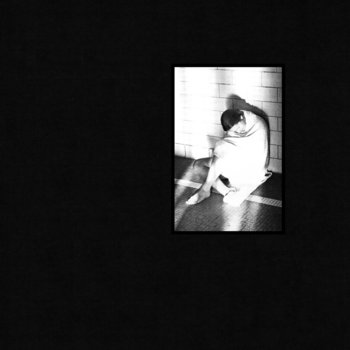
The latest project of Madeline Johnston of Sister Grotto. Together with collaborator Tucker Theodore, Midwife creates dreamy songs that confront raw emotions, haunted soundscapes that get stuck in your head. Following their acclaimed 2017 debut Like Author, Like Daughter, their new Prayer Hands EP delves further, bringing more reverb-drenched anthems of loss.
More information can be found here.
Read More
- Administrator
- Albums and Singles
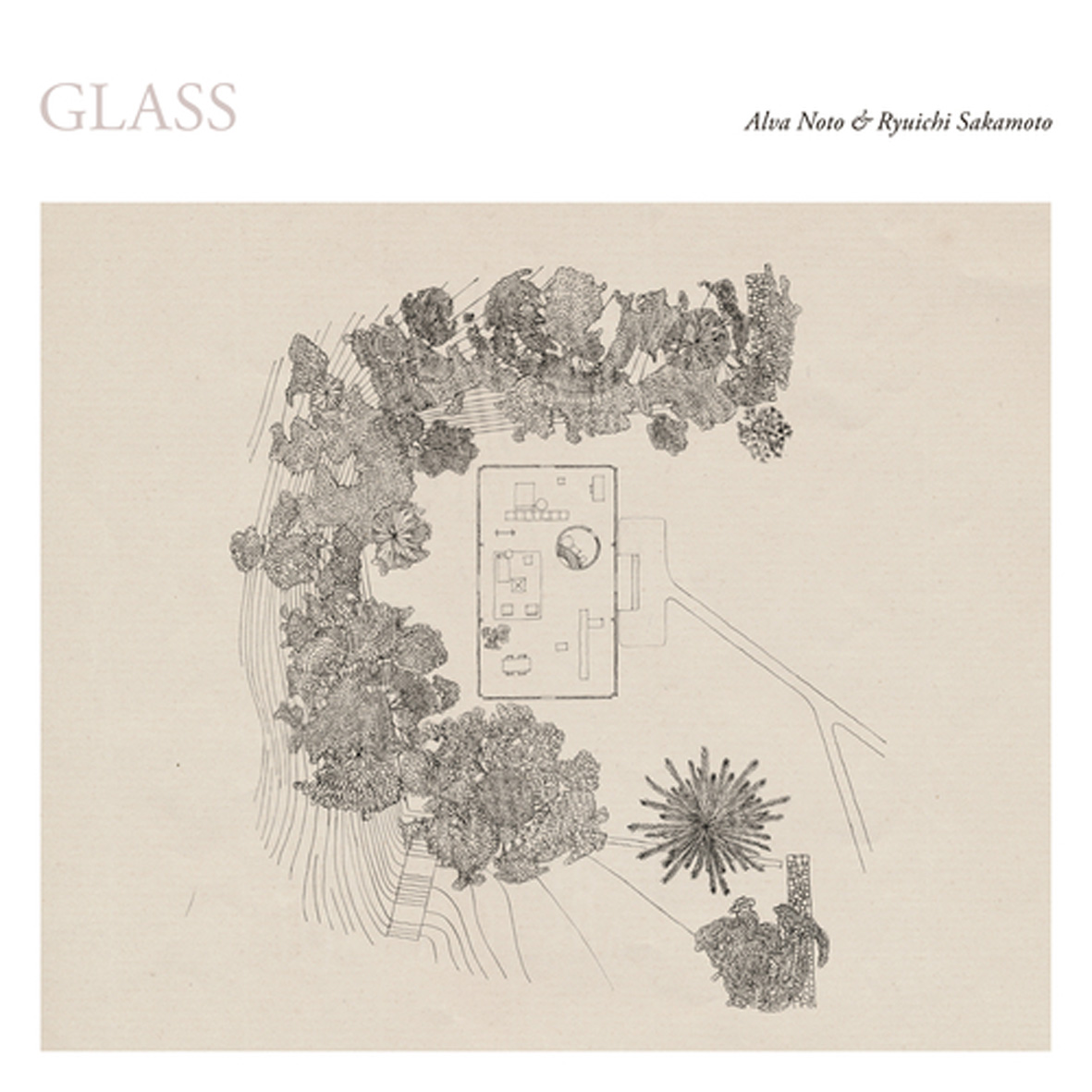 Carsten Nicolai and Ryuichi Sakamoto have a fairly lengthy history of collaborations, but this is an especially fascinating (if brief) one: an improvised performance in Philip Johnson’s legendary Glass House that coincided with the opening of a Yayoi Kusama installation. A lot of the appeal unsurprisingly lies in the duo's process, as they used the house itself as an instrument, contact mic’ing the walls and rubbing them with rubber mallets. However, Glass is also quite beautiful as a pure listening experience, striking an absorbing balance between ghostly ambiance and a crystalline and glittering rain of slow-motion glass fragments.
Carsten Nicolai and Ryuichi Sakamoto have a fairly lengthy history of collaborations, but this is an especially fascinating (if brief) one: an improvised performance in Philip Johnson’s legendary Glass House that coincided with the opening of a Yayoi Kusama installation. A lot of the appeal unsurprisingly lies in the duo's process, as they used the house itself as an instrument, contact mic’ing the walls and rubbing them with rubber mallets. However, Glass is also quite beautiful as a pure listening experience, striking an absorbing balance between ghostly ambiance and a crystalline and glittering rain of slow-motion glass fragments.
Nearly any good site-specific work of sound art is going to evoke a strong sense of place, particularly if the site is one as unique as The Glass House.The early moments of Glass, however, evoke something very different than a serene and pastoral masterpiece of modern architecture.Instead, it feels like I am in the subterranean depths of a vast and deserted parking garage in the middle of the night.I can hear the distant hiss of traffic, yet the most prominent sounds are disconcertingly loud and echoing drips, along with an ominous and steadily strengthening hum.As that hum becomes louder and more layered, it feels increasingly supernatural, as if flickering phantasms are quietly emerging from the walls and shadows to encircle me.It is hard to quite put my finger on the exact moment when things change, yet my surroundings seem to seamlessly dissolve at some point into something that feels even more haunted, but more otherworldly and futuristic.It is a lot like waking up from a nightmare only to realize that I am actually in a different nightmare, like a Russian nesting doll of uncomfortable dreams.I recognize that I probably reference Tarkovsky more than is healthy, but the lion's share of Glass feels like I have awoken in the world of Solaris and my sanity is being steadily gnawed away by escalating hallucinations and a dawning sense that my orderly, sterile surroundings are actually fluid, illusory, and potentially malevolent.
Of course, in order to experience the absorbing and creepily revelatory beauty of this album, I first had to realize that Glass is an album that necessitates extreme volume.If I listen to it casually at a normal level, it sounds like a likeable spectral drone album enlivened by an occasional flurry of crystalline processed crotales or an unexpected blurt of tormented synth.Experienced more immersively at heightened volume, however, the subtle details spring to vivid life and Glass coheres into a purposeful and haunting arc.At its best, it feels like a dazed walk through endless brightly lit corridors that eerily bend, warp, blur, flicker, and reshape themselves like they are disturbingly alive.There is definitely an otherworldly beauty to the dreamily blurred drones and the twinkling, falling icicle-like interludes, yet there is a rising darkness and slowly dawning horror that curdles the piece into something like a grotesque caricature of an angelic choir: unnerving dissonances creep into the harmonies, drones slowly undulate like phantasmal serpents, and an occasional tormented squeal cuts viscerally through the fog. The steadily massing and darkening miasma of blurred and ghostly tones casts an absolutely beguiling spell–the role of everything else is merely to inject life, contrast, and unpredictability into its slow yet inexorable intensification.I am not sure how much of the piece was improvised and how much was planned in advance, but Glass feels like a very deliberate and organically building piece precisely because the central theme is so simple and perfect and all of the peripheral textural flourishes are executed with an impressive lightness of touch.Even the more cutting and structured moments feel like they are ephemerally emerging from an enchanted mist that will soon reclaim them.
The only questionable decision comes during the piece’s final third, as someone delves into something that sounds like a bleary melodica solo (I am guessing Sakamoto is the culprit, unless the supernatural power of the piece inadvertently summoned Augustus Pablo from the spirit world).While that solo gamely adheres to the piece’s floating and indistinct aesthetic, it nevertheless transforms the entire feel of the piece in a significant way.Pre-solo, Glass is a gorgeously eerie dreamscape ingeniously crafted from the sounds of glass.Once the solo appears, however, the illusion dissipates somewhat and the piece instead feels like a human musician improvising a melody over a particularly surreal and unconventional backdrop.Naturally, that has its appeal too (especially given the caliber of the artists involved), but it is enough to downgrade Glass from "sublime, understated masterpiece" to "a very interesting performance with flashes of genuine brilliance."I suppose that is unfortunate, as it is always the albums that come closest to greatness that break my heart a little, but it does not change the fact that Glass is still one of the most significant and inspired works of serious sound art that I have heard this year.
 
Read More
- Administrator
- Albums and Singles

Mark Fell returns with an incredible album of rhythmelodic cadences performed with Drumming Grupo De Percussão on the Sixxen metallophone system: a set of six microtonally tuned instruments originally conceived by Iannis Xenakis in 1976.
The eight-part Intra stands out as one of Fell's most immediate and unusual releases; high in concept but also satisfying an obsession for complex polyrhythms as explored and developed by the likes of Beatrice Dillon, Don't DJ, and further out to augmented realities rendered by Kara-Lis Coverdale, Kassem Mosse and even Jlin.
Making use of a kind of conceptual future-primitivism, Fell probes the perceptive difference between ideas of simplicity and complexity by sending instructions to acoustic drummers via electronic triggers relayed through headphones, an idea he first explored on the Time and Space Shapes for Gamelan installation made in collaboration with Laurie Spiegel.
His ongoing interests in the classical Indian "Carnatic" music systems also play a big part here; its mathematical sound rules or Tala, have 35 possible combinations - many more than the usual Western structures of minor and major scales. It is this structure that imbues these recordings with such complex, propulsive and oddly pensive energies.
Concept aside, Intra is a beautiful piece of sound art which sidesteps convention and perceptions of music in a way that’s highly pleasurable, even strangely soothing in its stilted trickle of off kilter tones, revealing successive dimensions with each repeated listen.
More information can be found here.
Read More
- Administrator
- Albums and Singles
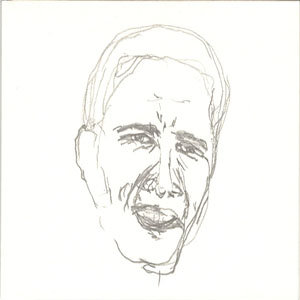 Unsurprisingly, Long Trax 2 sounds like a direct continuation of the first album Will Long (Celer) issued in 2016. Self-described as a "house" album, Long’s interpretation of the classic genre takes some liberties with expectations as far as the style goes.  Sure, the rhythms are there and the primary focus, but Long filters the standard facets of the style through his minimalist approach to sound he established in the ambient space of Celer, resulting in a meditative album that is far more calm than club friendly.
Unsurprisingly, Long Trax 2 sounds like a direct continuation of the first album Will Long (Celer) issued in 2016. Self-described as a "house" album, Long’s interpretation of the classic genre takes some liberties with expectations as far as the style goes.  Sure, the rhythms are there and the primary focus, but Long filters the standard facets of the style through his minimalist approach to sound he established in the ambient space of Celer, resulting in a meditative album that is far more calm than club friendly.
House music was of course created with the dance club in mind, but Will Long's interpretation of it does not lend itself very well to that context.His arrangements are too hushed and quiet, and the drum machine is mixed a bit too soft to fill out a dance floor via pounding bass.Given his work as Celer though, I assume introspective listening is more the mood Long is going for with this project.He also acknowledges the political side of the genre, which is less focused on by those modern day practitioners of the genre, via political speech samples mixed in throughout this collection.
Like the original Long Trax he presents six songs, all of which sit near the ten-minute mark (this compilation was again also presented as a series of three 12" singles).The same building blocks are in play here as well:sparse, restrained synthesizer washes and notably understated production, all propelled by the stiff metronomic Roland digital drum machine.There is a similar sense of almost hypnotic repetition, where the pieces are varied slightly, but never dramatically shift in tempo or dynamics.
Long lays out the blueprint right from the start on "Nothing's Changed":elongated keyboard pads are stretched around the rigid beats, peppered with samples of early Barack Obama speeches throughout.Slowly he adds additional elements to the rhythm, switching the bass drum pattern up and throwing in hand claps at the end.Structurally "You Know?" is similar with its synth swells and slow rhythmic development.Here though he mixes things up, sticking to the drumstick and shaker preset sounds on the machine, with the final product having a nicely sleepy, somnambulist drift to it.
"We Tend to Forget" features a more traditional house sounding organ sound, but processed and distilled to its most basic features, although here he is emphasizing the kick drum led rhythms more than anything else.The beat is modified as the song goes on, but for the most part he treats the synths as a subtle accent more than a melodic centerpiece.For "The Struggles, The Difficulties" he uses a similar tactic, keeping the synthesizer low and instead emphasizing the insistent beat.The samples are sparse and the rhythm is mixed up as it goes on, but again there are not drastic changes.
Long Trax was a polarizing release, one that many felt was too understated for what Will Long was attempting to do via a new style of music, and its follow-up is no different.I found it engaging, however, but being a Celer fan beforehand, I listened to these songs as an ancillary project to his work there, and in that context it is an excellent fit.They may not be club bangers, but they are gentle and spacious ambient works that nicely lulled me in, sometimes drifting off to the background but never becoming forgettable or easily ignored.It is an idiosyncratic approach to beat-driven electronic music, but an excellent one.
samples:
 
Read More
- Administrator
- Albums and Singles
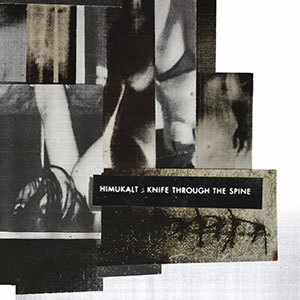 Ester Kärkkäinen’s 2016 debut as Himukalt, Conditions of Acrimony was an extremely impressive release that featured some excellently dark moments within ambiguous noise compositions. For her first vinyl album, Knife Through the Spine, she has fully embraced the early 1990s power electronic scene, creating a dark, disturbing, and at times extremely aggressive record that has a tighter, more specific focus in its sound. However, her unique take on the style, as well as her nuanced approach to creating music results in a fresh, unique release that sounds like no one else.
Ester Kärkkäinen’s 2016 debut as Himukalt, Conditions of Acrimony was an extremely impressive release that featured some excellently dark moments within ambiguous noise compositions. For her first vinyl album, Knife Through the Spine, she has fully embraced the early 1990s power electronic scene, creating a dark, disturbing, and at times extremely aggressive record that has a tighter, more specific focus in its sound. However, her unique take on the style, as well as her nuanced approach to creating music results in a fresh, unique release that sounds like no one else.
The commonalities with artists such as the Grey Wolves and Con-Dom are apparent immediately on this record, not just on the sound but the art and presentation as well.Kärkkäinen's use of malfunctioning photocopying technology as a visual artist results in an aesthetic that is nicely consistent with those harsh post-industrial albums on labels such as Tesco Organisation.However, the overall feel of Knife Through the Spine is distinctly different.Rather than intentionally confrontational political ambiguity or serial killer worship (both of which are beyond trite at this point), Himukalt's sound is more personal and any sense of violence is more self-inflicted in nature.The depressive mood is akin to Maurizio Bianchi's early work, and the more violent outbursts are complementary to the bleaker, harsh moments in Atrax Morgue's discography.
"I'm Afraid" gives a clear power electronics feel from its immediate pulsating electronics and shrill grinding noises.The rhythmic, yet heavily distorted backing nicely complements Kärkkäinen's vocals:a manic, heavily processed and flanged outburst that gives a nicely old school feeling while being almost completely indecipherable.However, her balancing of the harsher moments with some ambient and nearly silent passages adds an additional sense of depth and variety that makes it a stand out.
"Social Anxiety #1" is another example of this, with her mangled voice and power drill like crunch piercing through loudly amidst desperate, heavily treated voices.It comes together as an unsettling, organic cascade of heavy electronics and rumbling subbass.The complementary "Social Anxiety #2" continues the bad feelings via ripping buzz saws and droning, sinister electronics.Again the final result is an uncomfortable, unsettling mass of unpleasantness that congeals perfectly.
Himukalt’s work also excels due to her sense of dynamics and variation.Instead of just a dull, punishing roar from beginning to end, the shifts are more manic depressivein nature.Squelching electronics and buzzing harsh rhythms punctuate "Staggered, Crushed", but her blending of these harsher outbursts and tenser, less explosive sounds make for an excellently unsettling pairing."Be Sure of Your Diagnosis (Version)" is another example of this, with shimmering noise explosions cutting through a hollow industrial din.Sputtering vocals help give even more depth to the whiplash stop/start structure of the piece, and as chaotic as it may seem, there is a clear sense of structure and organization.
In just two years Ester Kärkkäinen has demonstrated impressive growth and change to her Himukalt project.Knife Through the Spine demonstrates some clear influences, but she takes the dark, harsh sounds in a different, more personal direction.Power electronics is a style I have been a fan of for a while, but I find it is often stale, and heavily focusing on the same, often juvenile, sense of provocation and controversy.It may sound like a callous statement, but Kärkkäinen's inner demons make for a more captivating experience on the listening end.
samples:
 
Read More
- Administrator
- Albums and Singles
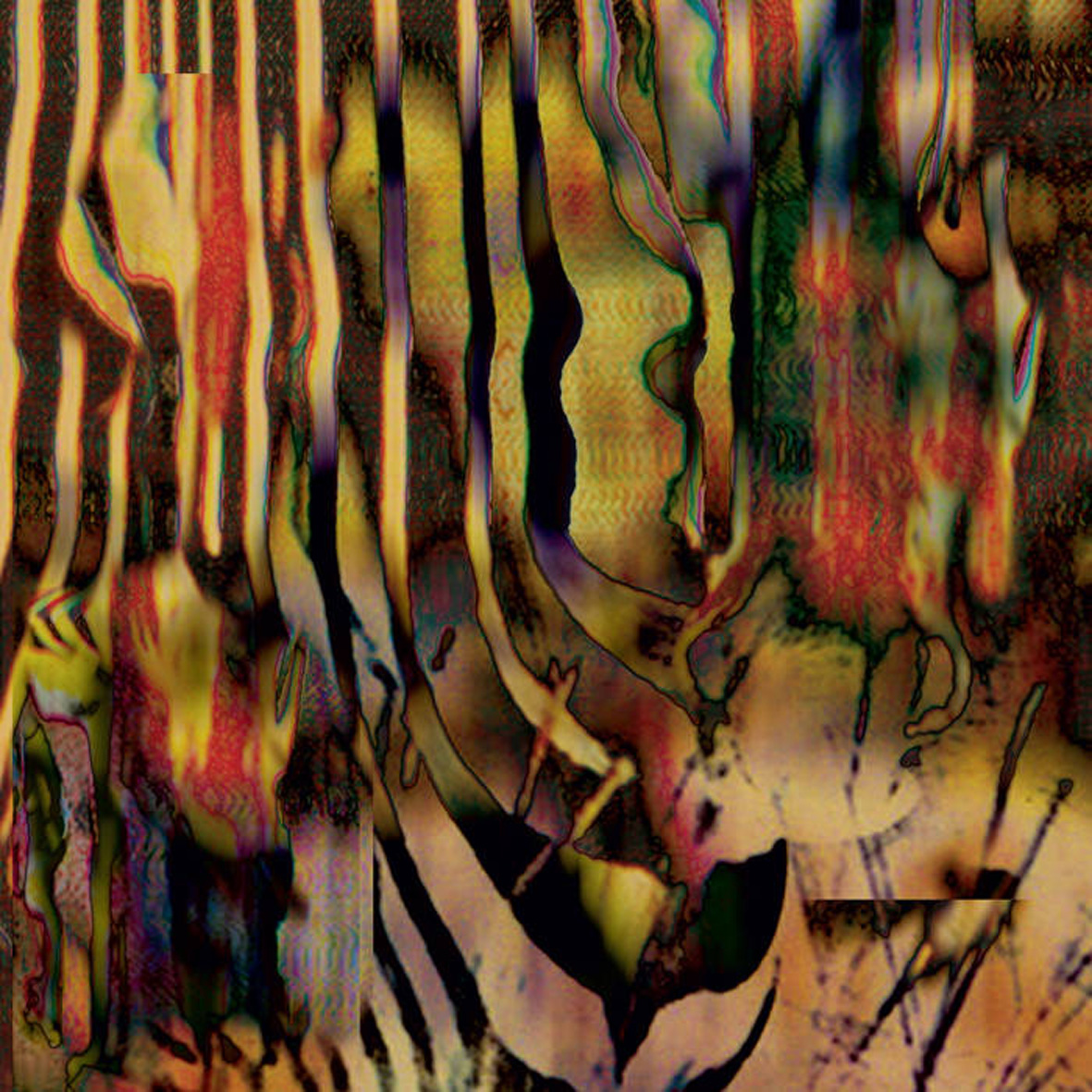 I still optimistically cling to the hope that Marc Richter will someday release another masterpiece in the vein 2009's Alphabet 1968 or 2014's Black to Comm, but his Jemh Circs project seems to be sticking around for the long haul and is proving to be quite an intriguing diversion in the meantime. Much like the first Jemh Circs album, (untitled) Kingdom is a deranged and fractured rabbit hole of cannibalized and re-purposed YouTube clips, though it feels like Richter has gone a bit deeper down that uniquely post-modern path this time around: this is very much a disorienting and lysergic playground of gleeful experimentation and deconstruction from start to finish. As such, much of (untitled) Kingdoms' appeal lies in its sheer otherworldly mindfuckery. However, the album's second half occasionally allows some unexpected vistas of alien beauty to break through Richter's stuttering and kaleidoscopic fever dream.
I still optimistically cling to the hope that Marc Richter will someday release another masterpiece in the vein 2009's Alphabet 1968 or 2014's Black to Comm, but his Jemh Circs project seems to be sticking around for the long haul and is proving to be quite an intriguing diversion in the meantime. Much like the first Jemh Circs album, (untitled) Kingdom is a deranged and fractured rabbit hole of cannibalized and re-purposed YouTube clips, though it feels like Richter has gone a bit deeper down that uniquely post-modern path this time around: this is very much a disorienting and lysergic playground of gleeful experimentation and deconstruction from start to finish. As such, much of (untitled) Kingdoms' appeal lies in its sheer otherworldly mindfuckery. However, the album's second half occasionally allows some unexpected vistas of alien beauty to break through Richter's stuttering and kaleidoscopic fever dream.
If I had to describe the overarching theme that defines (untitled) Kingdom and possibly Jemh Circs in general, I would probably choose "obsessiveness," though the project is also a place where Richter allows himself the freedom to let his weirdest impulses go unchecked.That is not to say that (untitled) Kingdom is unfiltered or lazily edited though, as it is definitely neither of those things.However, it would be fair to say that most (if not all) of these 24 pieces are each constructed from just one or two small details unrecognizably excised from Richter's found YouTube footage.Also, the source material has a curiously unpredictable feel, as if Richter deliberately chose clips at random and challenged himself to make something compelling from whatever fell in his lap.Sometimes, those clips inspire something that feels like the warm, woozily dreamlike beginnings of a Black to Comm piece ("Lac Dali"), yet Richter’s mercurial muse is equally likely to steer him towards something that brain-fryingly resembles a demonic herd of extra-dimensional cows ("20/20").Both directions have their appeal, obviously.It is the latter that feels more like Jemh Circ's raison d'etre, however: this is the place to go if I want to hear Richter contort and recontextualize the mundane into something truly challenging and alien.Another fine example of such a plunge into the unknown is "PG/YY/A," which feels like I have been transported to a whimsical cartoon world, but I am damned to experience it from the inside of an active washing machine.Elsewhere, "SFW/ii" feels like a queasily broken hip-hop banger recorded by a bunch of drugged, incoherent elves."CRISPR/Cas9" is yet another manic mindfrazzler, resembling a mangled VHS copy of an aggressively cheery children's show that only plays at the wrong speed and constantly skips.
While being playfully wrong-footed again and again is certainly a welcome treat for my jaded ears, Richter's psychotropically chopped, stretched, and stuttering fantasia also coheres into some striking passages of otherworldly heaven.My favorite piece, "Milch," takes a page from classic Oval, building a sublime chord progression from obsessively skipping micro-loops, but augments it with a bleary haze of floating harmonies that almost feels like an avant-garde orchestral work.Soon after, Richter makes an especially unexpected detour into weirdly soulful territory with "Doyg," marrying a tender and twinkling piano melody to a decontextualized yet heartfelt "ooh" sample.It is definitely one of Richter's more fascinating feats on the album, as he manages to evoke the essence of a great soul ballad, but turns that experience into something quite disorienting and novel: the piece seems unable to ever move forward, damned to endlessly stumble over the same phrase as hallucinatory snatches of crowd noise gradually bleed into the periphery.On the other end of the spectrum lies "Gn0sis," which sounds like a Portrait of Dorian Gray-style perversion of the Black to Comm aesthetic, transforming heady drones into something sickly, gnarled, shrill, and confused. Another particularly unusual piece is the closing "Persian Knives," which takes a lovely motif of gently wriggling and dreamlike synth tones and steers it into a surreal fog of crackling and cacophonous radio transmissions.
The only caveat with (untitled) Kingdom is the obvious one: Jemh Circs is where Richter's most absurd and whimsical impulses live and thrive (his more majestic and essential work lies elsewhere).That said, Jemh Circs is still an intriguing entity in its own right and it is not impossible to imagine that some people might genuinely prefer this endearingly chaotic and unpredictable vein.There is certainly a lot of naked experimentation for the sheer joy of discovery, yet for all of its candy-colored lunacy, there is a deep, coherent, and thoughtful vision that runs throughout the entire album.It is almost forensic in a weird way, taking an extremely focused and exacting dive into our ceaseless torrent of instantly forgotten pop culture detritus in a sincere attempt to find and isolate elusive snatches of real beauty and wonder.Perhaps an even better analogy would be to say that Richter is like a quixotic lepidopterist attempting to rescue rare butterflies that somehow wound up in a blinding blizzard: there is absolutely no telling what the hell is going to find its way into his net, but the results of his efforts can be improbably lovely and exotic when he gets what he is after.
Read More
- Administrator
- Albums and Singles
 Shumoto & The Byrde, the duo of guitarists Austin Hatch and Jefferson Pitcher have collaborated before, but their shared connection with Pauline Oliveros, with Hatch being been a fan of her work, and Pitcher studied under her at Rensselaer Polytechnic Institute helped to motivate this collaboration. With eight pieces spread across two records, all improvised live with a small amount of overdubbing when necessary, the duo have created a beautiful and fitting tribute to one of experimental music’s luminaries.
Shumoto & The Byrde, the duo of guitarists Austin Hatch and Jefferson Pitcher have collaborated before, but their shared connection with Pauline Oliveros, with Hatch being been a fan of her work, and Pitcher studied under her at Rensselaer Polytechnic Institute helped to motivate this collaboration. With eight pieces spread across two records, all improvised live with a small amount of overdubbing when necessary, the duo have created a beautiful and fitting tribute to one of experimental music’s luminaries.
Some of the pieces contained within these four album sides are more specifically guitar-centric in their concept and instrumentation."Opening/Leaving", for example, is largely a pairing of two guitars playing complementary clean note progressions, melding together in a complex, mournful tone that eventually takes a turn for the more dissonant.Bent strings, elongated sounds and shifting pitches give a different sheen to the piece.The guitar stays overt but some of the other sounds do not, eventually culminating in a wild western ghost town ambience that ultimately doubles back to the conventional melodic progressions that opened the song.
"Entropy" has Shumoto & The Byrde retaining the same melancholic mood, with lots of open space punctuated by sparse, pure guitar chords.The mood is similar to "Opening/Leaving" but the entirety of the structure has a different, looser, more free improvised feel to it overall."Beneath Boat" also sees the duo retaining more traditional guitar sounds as the focus, but with a greater frequency of incidental string noises (scrapes, vibrations, plucks, etc.) that contrast the more sustained droning backgrounds.
Never does The Sea Will Carry Me fully eschew the guitars, but their conventional sounds are not always the focus."For Pauline", recorded upon the night of her passing, is a melding of wobbly tones and tonal spaces as opposed to more conventional resonating chords.Layers drift in and out and a cavernous, distant chug give the piece a distinctly different color.Greater abstraction, along with the scraped and bowed strings, makes for a darker, somewhat bleaker piece."Engine Room Monastery" is also less centered on standard guitar sounds and instead is a conjuring of noisy spaces, groans, and hollow scrapes.The two create more of a shamble than a flow, and the monastic like chanting that eventually appears just adds to the mood.
The final piece of this double album, "Mountain Above Sky", brings the proceedings back to how it began and is perhaps the most heartfelt tribute to the Oliveros.Sparse chords and sung duet vocals make for the focus, balancing the large and small sound dynamics perfectly.The performance matches the mood in a sad, beautiful, and intimate way that, by its conclusion, features accordion in a final, appropriate tribute to her.
Pauline Oliveros may not be associated with the guitar as an instrument, but Jefferson Pitcher and Austin Hatch have clearly taken on her methodology to sound and art and translated it to their respective instruments.Like her own works, Shumoto & The Byrde encourages deep listening and give the space for that to happen throughout this heartfelt, powerful record.The Sea Will Carry Me is the result, in the form of a loving, fitting tribute to Oliveros and her work that I am sure she would be extremely proud of in every possible way.
samples:
 
Read More
- Administrator
- Albums and Singles
 I have been casually familiar with London-based guitarist Cam Deas for years through his many "post-Takoma" releases on Blackest Rainbow, but the Cam Deas of the past bears virtually no resemblance to the artist responsible for the visceral and deranged Time Exercises. Deas' campaign of radical reinvention appears to have begun sometime around 2011 with his Quadtych series and fully blossomed (or so I thought) with 2014's String Studies, in which his guitar became a mere trigger for squalls of atonal and spasmodic electronic chaos. With Time Exercises, Deas gamely ventures still further from his comfort zone, setting his guitar aside completely to focus on complex modular synth experiments. The album's prosaic/academic-sounding title is an amusingly huge and deceptive understatement though–a far more appropriate title would be "Nightmare Studies" or "Holy Fuck–What is This?!?," as Studies aesthetically resembles a cross between Rashad Becker's Notional Species and a seething pit of digitized snakes from a hellish alien dimension.
I have been casually familiar with London-based guitarist Cam Deas for years through his many "post-Takoma" releases on Blackest Rainbow, but the Cam Deas of the past bears virtually no resemblance to the artist responsible for the visceral and deranged Time Exercises. Deas' campaign of radical reinvention appears to have begun sometime around 2011 with his Quadtych series and fully blossomed (or so I thought) with 2014's String Studies, in which his guitar became a mere trigger for squalls of atonal and spasmodic electronic chaos. With Time Exercises, Deas gamely ventures still further from his comfort zone, setting his guitar aside completely to focus on complex modular synth experiments. The album's prosaic/academic-sounding title is an amusingly huge and deceptive understatement though–a far more appropriate title would be "Nightmare Studies" or "Holy Fuck–What is This?!?," as Studies aesthetically resembles a cross between Rashad Becker's Notional Species and a seething pit of digitized snakes from a hellish alien dimension.
The five numbered "exercises" on Time Exercises feel very much like nearly interchangeable variations on a theme to human ears, so it is quite hard to differentiate them using any established/conventional musical vocabulary.That being the case, the opening "Exercise 1" lays down the template and effectively sets the album's hostile, undulating, and unsettlingly alien tone.The initial theme can be best described as "sputtering, incredibly dense synth tones shaken by seismic shudders from below and strafed by menacingly dissonant swoops from above."Very quickly, however, that motif is torn completely apart and the piece settles into a strangely lurching miasma of erratic percussion amidst massive, cacophonous snarls that feel like the very fabric of the universe is being brutally rended.It is the sort of scene that would have made HP Lovecraft weep in admiration, then probably stop writing forever, as mere words cannot come close to conveying the all-engulfing extra-dimensional horror that Deas unleashes.The following "Exercise 2" is comparatively understated, resembling a disjointed and deconstructed pile-up of primitive percussion that suggests an ancient tribal ceremony in a deep jungle that is conjuring forth menacing demonic shadows that block out the sun.That is just a mere prelude though, as the piece then erupts into a squirming smear of slithering, sickly, and grotesquely glimmering synths.To his everlasting credit, Deas then finds a way to get even darker, as that motif is disrupted by something that sounds like a massive appliance tumbling down an endless flight of stairs in extreme slow-motion with all of the resultant clanking and clattering warped nightmarishly.This album is so twisted that sound waves cannot even be trusted to travel through air predictably.
"Exercise 3" is yet another stunner, resembling a vast, squirming nest of impossibly massive, slime-coated serpents and perhaps a flock of hapless geese caught in their midst.Elsewhere, "Exercise 4" feels like a slowly building gale of howling winds, but then the skies suddenly clear…and the clouds open up to unleash a sky-obliterating swarm of massive, murderous hornets.I definitely did not see that twist coming.Unexpectedly, the closing "Exercise 5" betrays some rare hints of conventional musicality, as cosmic synth drones glimmer and streak across dark skies as the ruined earth shudders, smolders, and collapses beneath.It is a fitting end to a truly disturbing album, as it feels like I am getting one last glance from space at the final paroxysm of a world where hell has opened up to drag the living into its fiery depths.
Even that description feels tame though, which speaks volumes about the degree to which Deas has succeeded in crafting a visceral and disturbing horror of an album: Time Exercises definitely feels like hell has boiled up from the ground to consume the earth, but it does not even feel like our hell.Rather, it feels like some kind of incomprehensible extra-dimensional hell that I could not have previously imagined.Unsurprisingly, I am quite floored by that vision and the execution is quite stunning as well.I definitely did not expect anything like this to come from the mind of Cam Deas, nor would I have expected it from anyone else's (aside from perhaps Becker after a complete psychotic breakdown).That is probably the point though: these infernal and unhinged sounds likely were not Deas' explicit vision so much as they were the utterly unearthly fruits of an inspired attempt to leave established patterns behind through math and electronics.I would definitely say the exercise worked, as this does not sound like an album that came from our planet: Deas has ambitiously constructed a harrowing and vivid alternate world seemingly uninfluenced at all by humanity's accumulated wisdom regarding melody, harmony, and rhythm.In lesser hands, such a feat might feel like noise or sheer randomness, but that is not the case at all here.If Rashad Becker's Traditional Music of Notional Species felt like field recordings of jabbering and chirping animals in an alien rainforest, Time Exercises goes one step further and exquisitely imagines their nightmares.
Samples:
 
Read More
- Administrator
- Albums and Singles
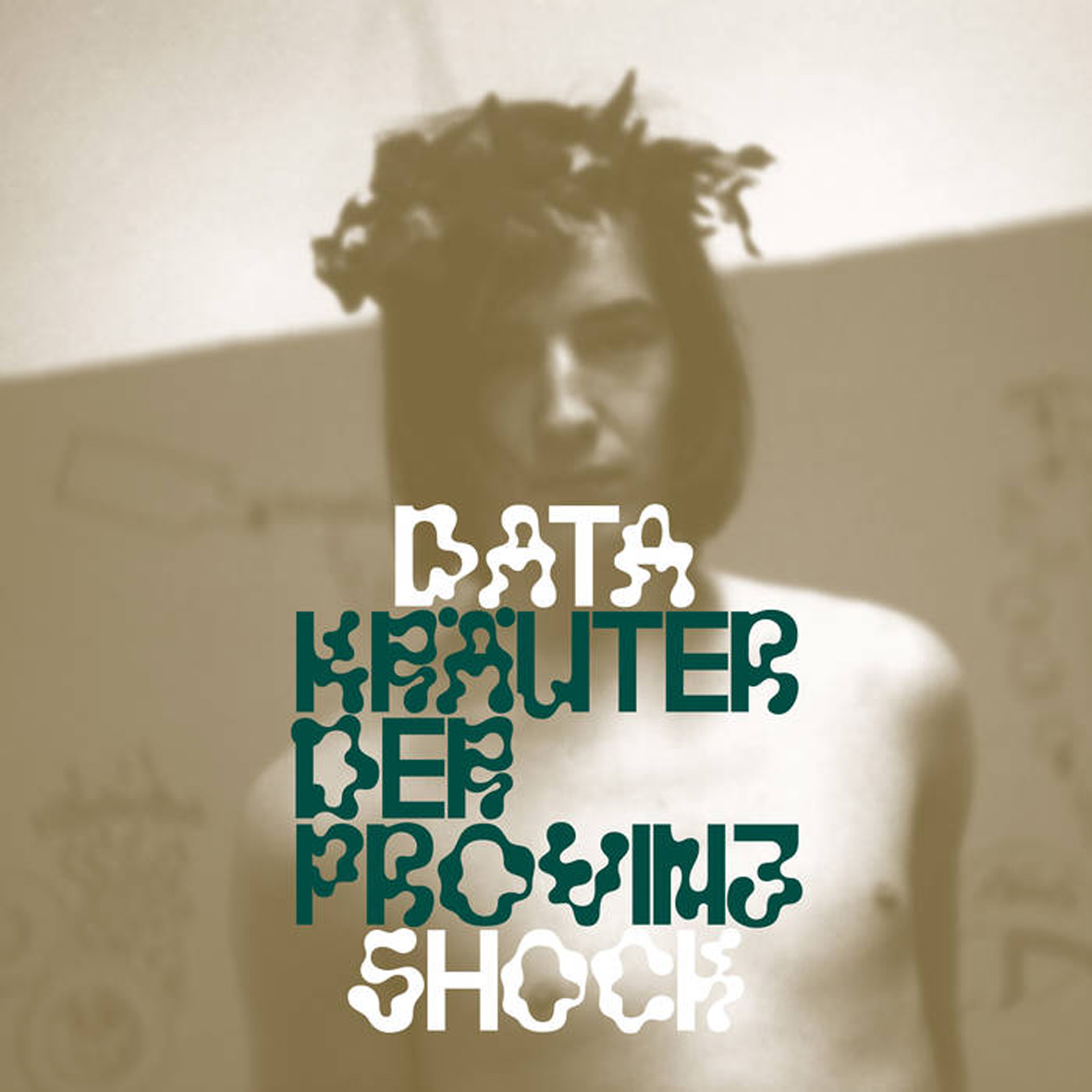 I have made a few sincere attempts to appreciate this shifting German collective over the years, but Datashock have proven to be a very hard act to wrap my head around. At times, they have seemed like an indulgent, improv-heavy pastiche of various seminal krautrock artists, yet they also have moments where it feels like they are actually the rightful heirs to the throne vacated by folks like Amon Düül II and Can. In fact, I suspect the latter would especially appreciate the perverse post-modern genius of Datashock being an ethnographic forgery of their own cultural heritage. I know I certainly do. In any case, this is the first Datashock release that has truly clicked for me. It is still uneven and exasperating at times, but such missteps are a rare exception and the second half of the album catches fire beautifully. While Datashock remain deeply and unapologetically in the thrall of the past, the best moments on Kräuter are inventive and inspired enough to transcend and surpass most of the bands they are hell-bent on channeling.
I have made a few sincere attempts to appreciate this shifting German collective over the years, but Datashock have proven to be a very hard act to wrap my head around. At times, they have seemed like an indulgent, improv-heavy pastiche of various seminal krautrock artists, yet they also have moments where it feels like they are actually the rightful heirs to the throne vacated by folks like Amon Düül II and Can. In fact, I suspect the latter would especially appreciate the perverse post-modern genius of Datashock being an ethnographic forgery of their own cultural heritage. I know I certainly do. In any case, this is the first Datashock release that has truly clicked for me. It is still uneven and exasperating at times, but such missteps are a rare exception and the second half of the album catches fire beautifully. While Datashock remain deeply and unapologetically in the thrall of the past, the best moments on Kräuter are inventive and inspired enough to transcend and surpass most of the bands they are hell-bent on channeling.
I suppose I cannot fault Datashock for opening Kräuter with "Hullu Gullu, Wir Liefern Shizz," as it seems like the perfect piece to lure in fans of krautrock revivalism (presumably a significantly larger audience than those of us seeking legitimately outré fare).Unfortunately, such a naked homage to Neu's "Hallo Gallo" is also the perfect piece for alienating me, as my tolerance for noodling solos and genially burbling motorik grooves is quite close to zero.Unless an artist using a motorik groove as a jumping off point for something far more radical than cheerily choogling into infinity, I truly do not understand the point of revisiting that formula in 2018: it is a rhythm that feels too plodding and blandly tame to exist in a culture that has since experienced four decades of vibrant rhythmic evolution.Thankfully, Datashock get considerably more gleefully deranged with "Wenn Alle Wollen, Will Uch Auch!," which sounds like a funky tribal groove burrowing into a shimmering cloud of chimes and jabbering animal noises.Most of the piece's appeal lies in the inspired combination of that wonderfully off-kilter beat with the simmering miasma of squelching and gibbering wildlife, but there is also a structured song lurking in there, as a languorous and lyrical flute melody winds through that surreal landscape to hold everything together.It is a wonderfully kooky, playful, and unselfconscious convergence of experimentalism, collage, improvisation, and satisfying momentum that erases all of my lingering disappoinment with "Hullu Gullu."In classic Datashock fashion, however,the simmering Eastern drone-meets-free-jazz piece that follows ("Im Zuchtstall Der Existenzhengste") sounds like a completely different band altogether.
That is a recurring and fundamental feature of Datashock's work that takes some getting used to, as the chameleonic ensemble is not interested in channeling one particular krautrock band–they are intent on channeling EVERY single one of them (sometimes more than one at once).At times, my more critical side dearly wishes that this band would pick a focused vision and stick with it, but their freewheeling unpredictability has a definite appeal that eclipses my misgivings when they pull a particularly surprising rabbit out of their hat.For example, "Spirituelle Enthaltsamkeit Im Sandwichverfahren" is a gorgeously woozy synth reverie that swirls with a ghostly fantasia of swooping and sliding strings. Elsewhere, "Halb-Halb, Wie Ein Guter Kloß" is another slow-burning gem, gradually transforming from a droning reverie into some kind of surreal desert-trance jam disorientingly engulfed by overlapping chants and distant sirens."Schönster Gurkenschwan" is yet another delightful surprise, unexpectedly evolving from a gorgeously sublime drone piece shivering and pulsing with chirping synths and whimpering strings into something resembling a chorus of malfunctioning pinball machines.The show does not end there, however, as the pinball machines prove to be merely a gateway into a churning, howling, and skwonking void of deep space cacophony.One of usual perils of improv-minded ensembles is a predictable arc that heads inexorably towards a crescendo of density and raw power, so it is refreshing that Datashock only take that path this one time.Since I was not expecting it, it made its intended cathartic impact.
If I pick it apart song-by-song, I suppose Kräuter Der Provinz is only a half-great album, as Datashock are definitely prone to meandering jams and indulgent song lengths.Also, they are not at all shy about appearing derivative (they celebrate it, in fact).Taken as a whole, however, this album feels like something far greater than the sum of its songs: a deep, sustained, and gently hallucinatory plunge into a world where concepts like time and place become very fluid and blurry.Also, the various scenes that Datashock conjure into being (jungles, deserts, black holes opening up in a pinball arcade, etc.) are generally quite vividly realized and richly detailed, making this an excellent and wonderfully absorbing headphone album.Aside from that, I find Datashock to be a uniquely fascinating band in their own curious way, as they are akin to a galaxy of stars that unpredictably converge into radically different constellations every time they come together.I have no idea who is steering this ship at any given moment nor what their motivations might be and I genuinely enjoy that.In most ensembles, that would be a great recipe for an absolute mess, but Datashock's better moments make that approach feel vibrant and adventurous in all of the best ways.
Samples can be heard here.
Read More
- Administrator
- Albums and Singles
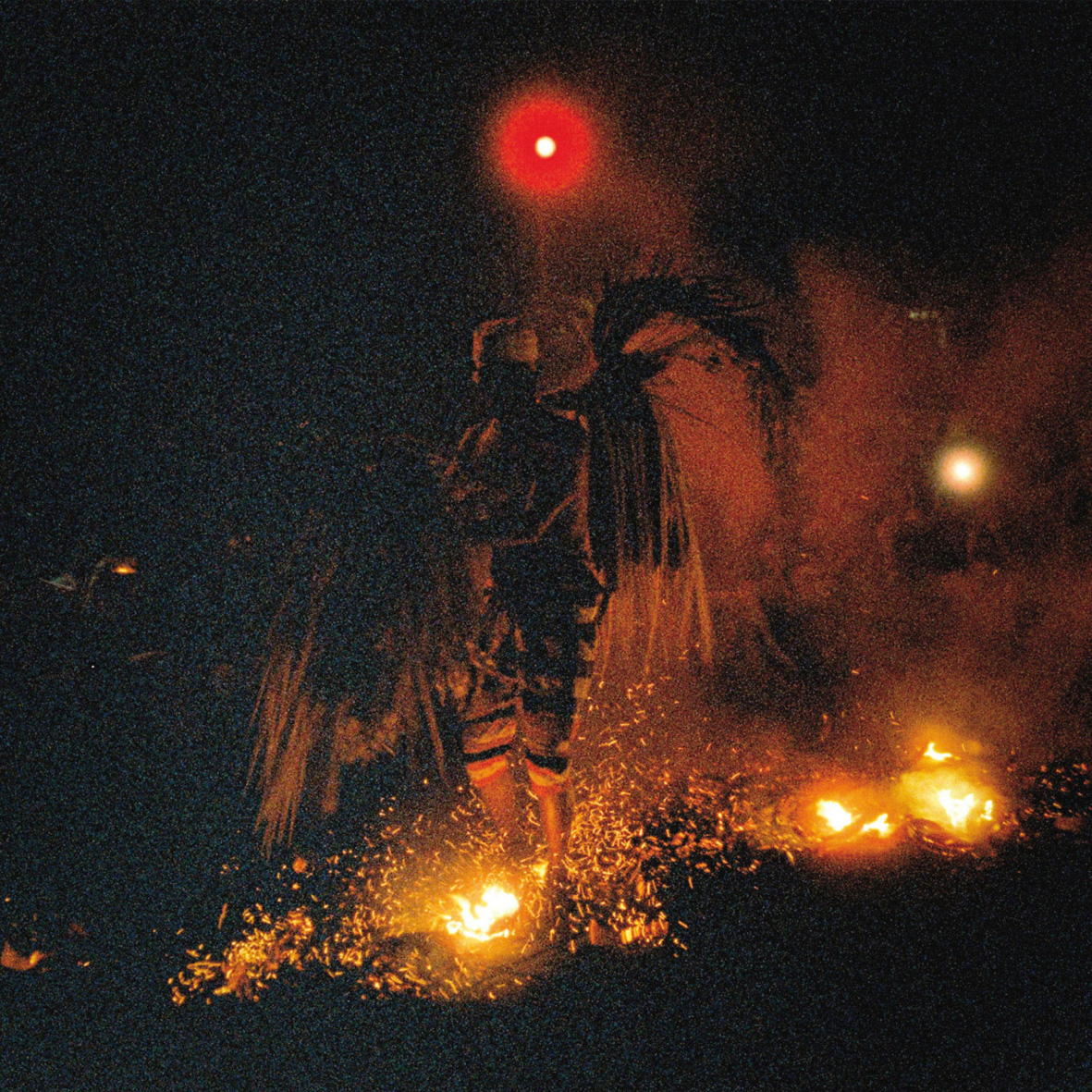 This new project is the debut release on the new Nahal imprint, bringing together Mondkopf's Paul Régimbeau and Lebanese artist Charbel Haber. In a rough sense, Good Luck in Death shares Mondkopf's heavy drone aesthetic, but Haber's presence shifts that vision into more diffuse, fragmented, and hallucinatory territory. The result is frequently quite haunting and sublime, as the duo craft an immersive world of darkly beautiful and blackened ambient drone mingled with flickering glimpses of a buried organ mass.
This new project is the debut release on the new Nahal imprint, bringing together Mondkopf's Paul Régimbeau and Lebanese artist Charbel Haber. In a rough sense, Good Luck in Death shares Mondkopf's heavy drone aesthetic, but Haber's presence shifts that vision into more diffuse, fragmented, and hallucinatory territory. The result is frequently quite haunting and sublime, as the duo craft an immersive world of darkly beautiful and blackened ambient drone mingled with flickering glimpses of a buried organ mass.
The opening "Mystery Malaise And Eternal Spleen" sets an eerily meditative scene, sounding like a mournful organ requiem that has been lysergically smeared.As it languorously unfolds, vaguely dissonant streaks of synth tones paint the sky and bleed together into a floating mass of uneasy harmonies.The central theme does not seem to have any particular arc, as the melody lazily waxes, wanes, and drifts along like a slow moving ghost, yet the piece maintains a wonderfully simmering intensity due to the buzzing, seismic throbs that regularly surge up from its lower depths.That beautifully half-real, half-ritualistic fever dream feeling essentially pervades the entire album, but Régimbeau and Haber find a lot of compelling territory to explore within its confines.I am especially fond of the second piece, "Fire Dreams And Reveries," in which a broken organ melody seems to be fighting to emerge from a sputtering, nearly dead speaker while being strafed by heavy, grinding swoops of gnarled synth.
The following "Fortune Telling Breeze" deepens the duo's palette a bit, as the stuttering and skipping organ drones are embellished by a mournful-sounding brass-like motif.Notably, neither artist is credited with any trumpets, flutes, woodwinds, or any other orchestral instrument, so it is a fool's errand to try to deduce which sounds are coming from which artist.Haber is credited exclusively with electric guitar, which should theoretically make his sounds fairly easy to delineate, yet there is almost nothing that sounds remotely like a guitar on this album at all.Whatever Haber played is so obscured by effects and processing that it completely blurs together with Régimbeau’s synths.I suppose that makes They Promised Us A Bright Future kind of a laptop album, yet the sounds that are being manipulated and reshaped feel surprisingly organic.I almost used the word "natural" instead, but there is very little that fits that description here."Supernatural," on the other hand, is an extremely apt description, as it is easy to envision a lonely, heartsick organist playing alone in a ruined cathedral as spirits swirl among the rafters and deep cracks start to appear in reality itself.In fact, the perversely titled closer, "Unforgettable Cabaret Nights," feels like the undulating cosmic horror that would likely bleed into that same scene once its precarious reality finally collapsed.To my ears, the only unforgettable cabaret night that the piece's sinister, see-sawing pulse and drugged, serpentine melody might evoke is one with blood-streaked walls and no living humans in sight.
For the most part, however, They Promised Us A Bright Future is not an overtly dark or menacing affair, though there are certainly enough encroaching shadows to give its precarious beauty an unwaveringly ominous tone.Instead, the album mostly feels like a gorgeously melancholy heaven being slowly gnawed apart by exterior infernal forces.It is quite an impressive tight-rope act, as Régimbeau and Haber construct a wonderfully heavy and twilit world of heaving drones and undulating harmonies imbued with a simmering tension that never dissipates or fully erupts.I was also especially impressed with Good Luck In Death's singular vision, as they have managed to carve out a striking and distinctive niche with their first release (as far as I know, absolutely no one else has thought to mine the "psychedelic organ mass mingled with slowly dawning dread" vein).In fact, this feels less like an album than an unsettling stroll through a mysterious gallery lined with increasingly macabre and tormented paintings, which is truly wonderful illusion that is exceeded only by the nagging sense that the barrier separating reality from the painted scenes has started to dissolve.
Read More
- Administrator
- Albums and Singles
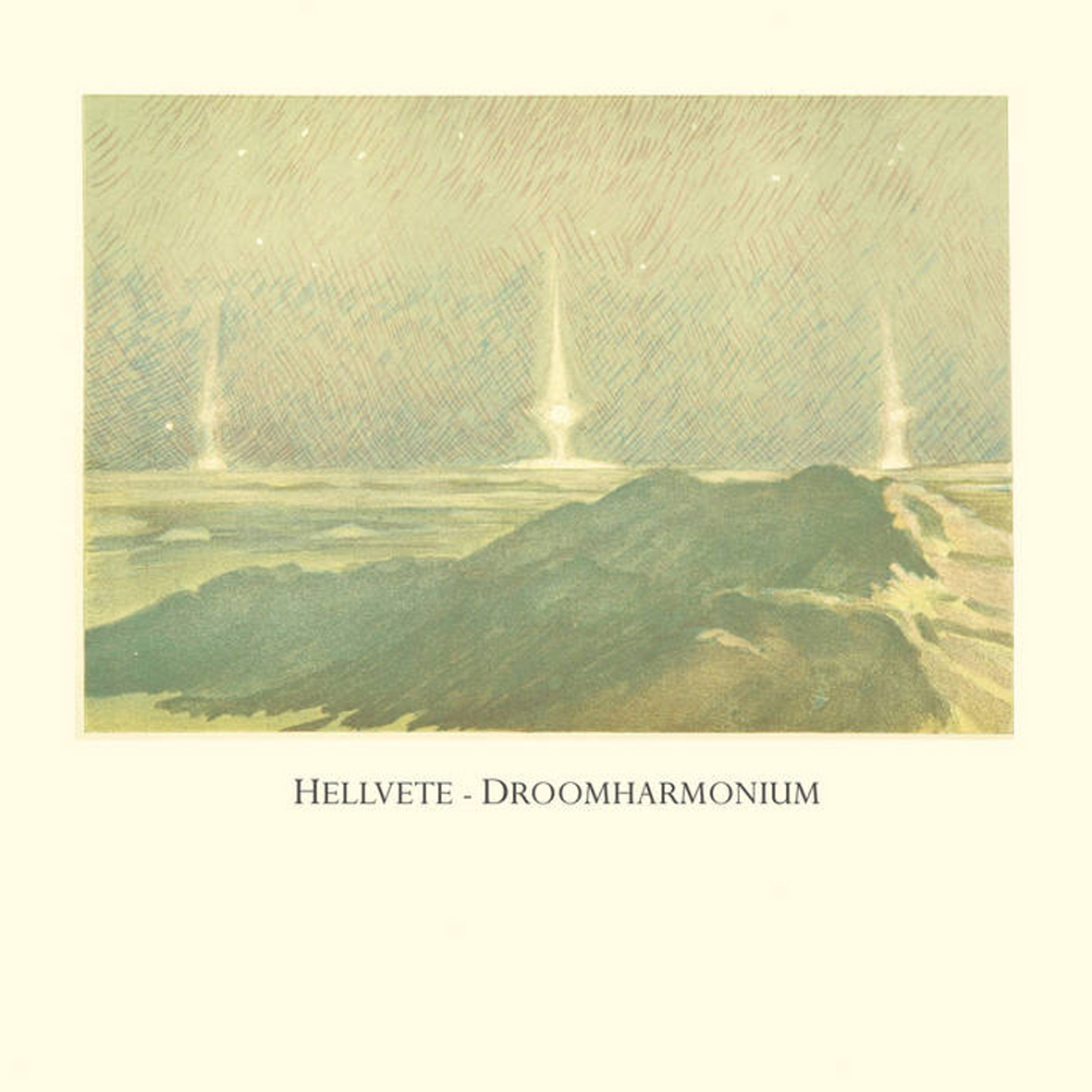 This sprawling double CD of extended harmonium performances was my first real exposure to the solo work of Sylvester Anfang II's Glen Steenkiste and it is quite a curious introduction. The closest kindred spirits are probably La Monte Young's "The Second Dream of the High Tension Line" or Stars of the Lid at their most pastoral, as Steenkiste devotes his energies to crafting deep, meditative drones that strain towards lightness and transcendence. Hellvete's work is not nearly as harmonically adventurous as the just intonation/Pandit Pran Nath-inspired milieu, but Steenkiste compensates somewhat with an unusual feel for time and a willingness to blur together music, ritual, and chance intrusions from the natural world. The less inspired passages tend to feel like sustained and halcyon suspended animation to me, yet Droomharmonium occasionally transforms into an entrancing bit of magic and wonder when Steenkiste is joined by some curious birds or the harmonium disappears to make way for some eerily twinkling bells.
This sprawling double CD of extended harmonium performances was my first real exposure to the solo work of Sylvester Anfang II's Glen Steenkiste and it is quite a curious introduction. The closest kindred spirits are probably La Monte Young's "The Second Dream of the High Tension Line" or Stars of the Lid at their most pastoral, as Steenkiste devotes his energies to crafting deep, meditative drones that strain towards lightness and transcendence. Hellvete's work is not nearly as harmonically adventurous as the just intonation/Pandit Pran Nath-inspired milieu, but Steenkiste compensates somewhat with an unusual feel for time and a willingness to blur together music, ritual, and chance intrusions from the natural world. The less inspired passages tend to feel like sustained and halcyon suspended animation to me, yet Droomharmonium occasionally transforms into an entrancing bit of magic and wonder when Steenkiste is joined by some curious birds or the harmonium disappears to make way for some eerily twinkling bells.
The opening "Droomharmonium V" starts the album in appealingly disorienting and unpredictable fashion, as a brief flourish of mass-like harmonium is quickly cut off to make room for a sublime passage of deep gong-like tones, chirping birds, and gently buzzing strings.It is quite a lovely interlude, establishing a very clear sense of place and striking a perfect organic balance between nature and art.In fact, tt does not feel like Steenkiste is performing so much as it feels like he is masterfully and quietly framing the contributions of his avian collaborators.Gradually, however, the harmonium reasserts its supremacy and blossoms into an improvisation that sounds simultaneously Middle Eastern and medieval.I am always a fan of temporal dislocation, so I enjoyed the ephemeral illusion of being transported to an ancient Persian palace.The Middle East is actually an extremely apt reference point for this album in general, as it is akin to a vast desert of sustained harmonium drones that occasionally blossoms into ephemeral mirages of something deeper and more vibrant.I specifically chose "mirage" rather than "oasis," as Droomharmonium's shifting sands only converge into more complex structures precariously and fleetingly–everything beautiful is damned to dissolve into a faint memory as the all-consuming thrum inevitably re-establishes its dominance.
That aesthetic perversely makes Droomharmonium an intriguingly challenging and ambiguous listening experience.In an uncharitable interpretation, it can be viewed as an overlong and indulgent release with lengthy lulls separating all the good parts.Alternately, Droomharmonium can be viewed as a meditative ritual that requires me to slow down my consciousness to meld with its glacial flow and languorously swaying pulse.When I am able to adapt to Steenkiste's slower-than-human timescale, I am rewarded with a deep sense of serenity punctuated by occasional glimpses of something more deeply beautiful and mysterious.Curiously, those sublime passages of something more compelling than radiant, gently undulating drones often tend to occur near the beginning of these four pieces rather than as any sort of culmination, which I suspect is necessitated by Glen's purist, overdub-free approach to these performances.He might set the scene with a gently hallucinatory dreamscape of twinkling bells ("Droomharmonium VII"), but once he gets serious about building up his sun-dappled mass of shifting harmonium tones, he is unable to focus on anything else (Steenkiste has a finite number of hands, sadly).That is unfortunate, as those ephemeral tastes of other instrumentation provide some welcome textural variety, though I suspect Steenkiste views their all-too-brief lifespans as a necessary casualty in his larger struggle to create something deeper and more profound than mere music.
Having heard some of Hellvete's non-harmonium work on Nachtwacht, I can say with certainty that Steenkiste is a talented multi-instrumentalist with a gift for strong melody and a solid intuition for pacing, so Droomharmonium's improvisatory hyperminimalism is very much a deliberate and consciously experimental choice.As such, I would describe Droomharmonium as a mixed success that I have conflicting feelings about.On a purely gut level, these pieces are simply too one-dimensional to fully connect with me and I prefer Hellvete's more conventionally musical fare.Particularly nagging is the fact that most of the elements of a more compelling, multilayered work are present, but are unable to linger once the harmonium kicks in.On another level, however, I very much appreciate that Steenkiste had the ambition and vision to cast aside everything he knows and attempt to construct a monolithic temple of transcendent drone.That transcendence did not quite bridge the gulf between performer and listener for me, but such a grand, quixotic undertaking certainly got my attention and respect.For better or worse, this is a truly unique album.In fact, it is only an album in the most literal sense, as it would be far more accurate to describe Droomharmonium as a vicarious glimpse of one man's deep "om" as he dissolves his ego in slow-moving clouds of overtones.
Read More

